How DMA Architects surveys facade condition using Layer
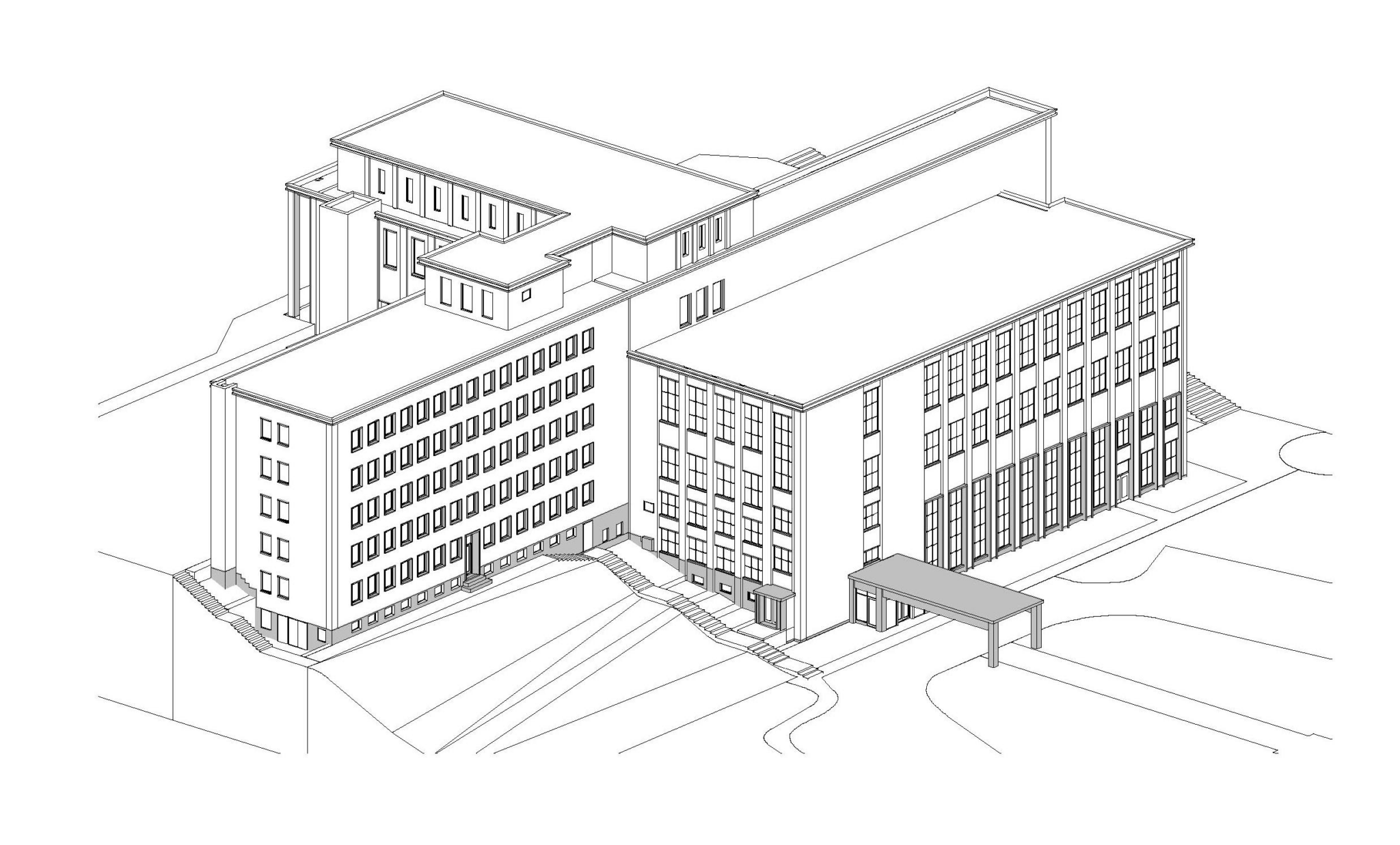
“With Layer, my work is MUCH easier. For example, on this project I have ±300 points that I transferred within 30 minutes. But it only needed to transfer one time. That’s it. Everything’s connected!”
BIM Manager & Technologist Olga Kerkhanidi
DMA Architects often works on renovation projects. Occasionally these are in older, sometimes historic or heritage buildings. The existing documentation for these structures is commonly outdated on nonexistent. This leaves the team with no pre-existing drawings or models to work off of at the start of a project. Their primary challenges include:
1. Creating a model with limited data to start from, while
2. Efficiently documenting the current condition of the building.
The DMA team is no newcomer to the restoration and renovation space. They’ve been doing this type of work for years. Their team previously used a legacy system of Excel sheets with some Dynamo mixed in. The aim was to have everything in Revit natively such as quantities, tags according to their standards, a history of building conditions.
When the team started looking for a new solution, they knew their ideal new tool would:
☐ Facilitate on-site data collection,
☐ Allow for easy classification,
☐ Ensure data is accessible and traceable, and
☐ Preserve all the information for future use.
DMA found their solution in Layer App
The DMA team began testing the Layer App during a masonry and window replacement project at one of the University of Montreal’s pavilions. Built in 1956, this building designed by architect Ludger Venne, features art-deco details. Standing between 7 – 9 stories, it has around 300 intricate wood and inox steel windows.
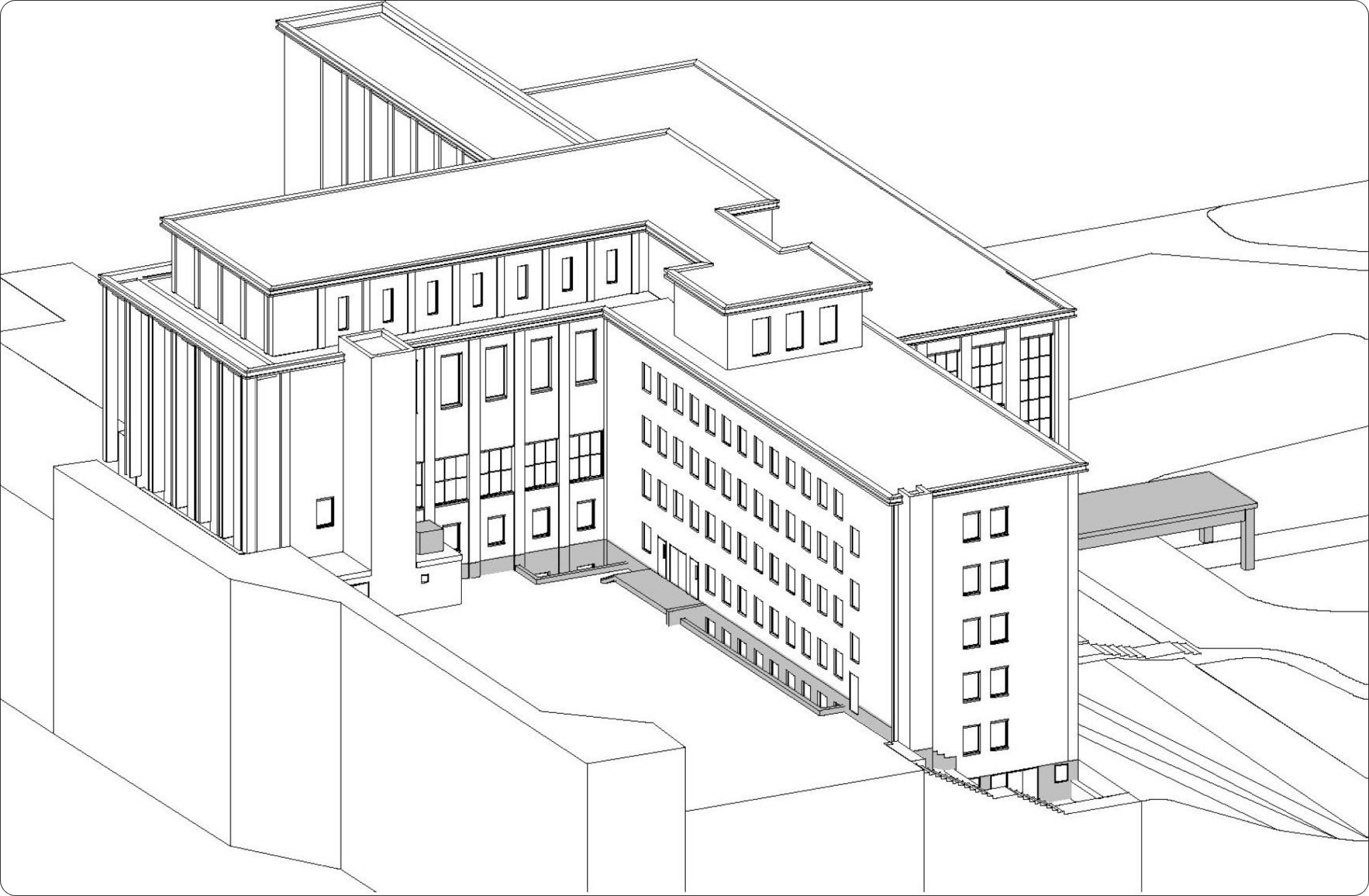
The restoration work of the building was split into various phases, with each phase focusing on a different facade. Layer was piloted on the second phase, which included inspecting the masonry and general building envelope conditions.
Here’s how DMA streamlined their existing conditions survey and data management process
DMA created a simple model for this project. In this case the model contained only basic walls and windows. However, the windows bore tags linking them to the nomenclature from the original documents and on-site measurements, as well as assigning certain parameters to the walls.
Inspections on site employed the forms in Layer App that were created during preparation. These forms list out deficiency options including types of issues, facade indications, a field for photographs, and markers indicating the deficiency’s location. Feedback from the inspection team highlighted the ease and logic of the data entry process.
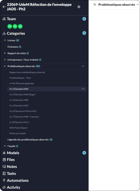
Before going on site, DMA followed a simple 4 step process to prepare for data capture:
1. Link the Revit model with Layer,
2. Prepare and publish a set of sheets with elevations from the model for inspections,
3. Create categories in Layer for elevations, potential issues, and deficiencies based on Phase 1 documentation,
4. Define forms within Layer to describe masonry deficiencies and enable reporting of each issue by elevation instantly.
Inspections on site employed forms in Layer App that were created during preparation. These forms list out deficiency options including types of issues, facade indications, a field for photographs, and markers indicating the deficiency’s location. Feedback from the inspection team highlighted the ease and logic of the data entry process.
Layer App’s benefits were clear from the start. Sometimes on-site deviations occurred. The tool could be updated in the field, to adapt to changes from the initial site inspection plan. This flexibility was crucial.
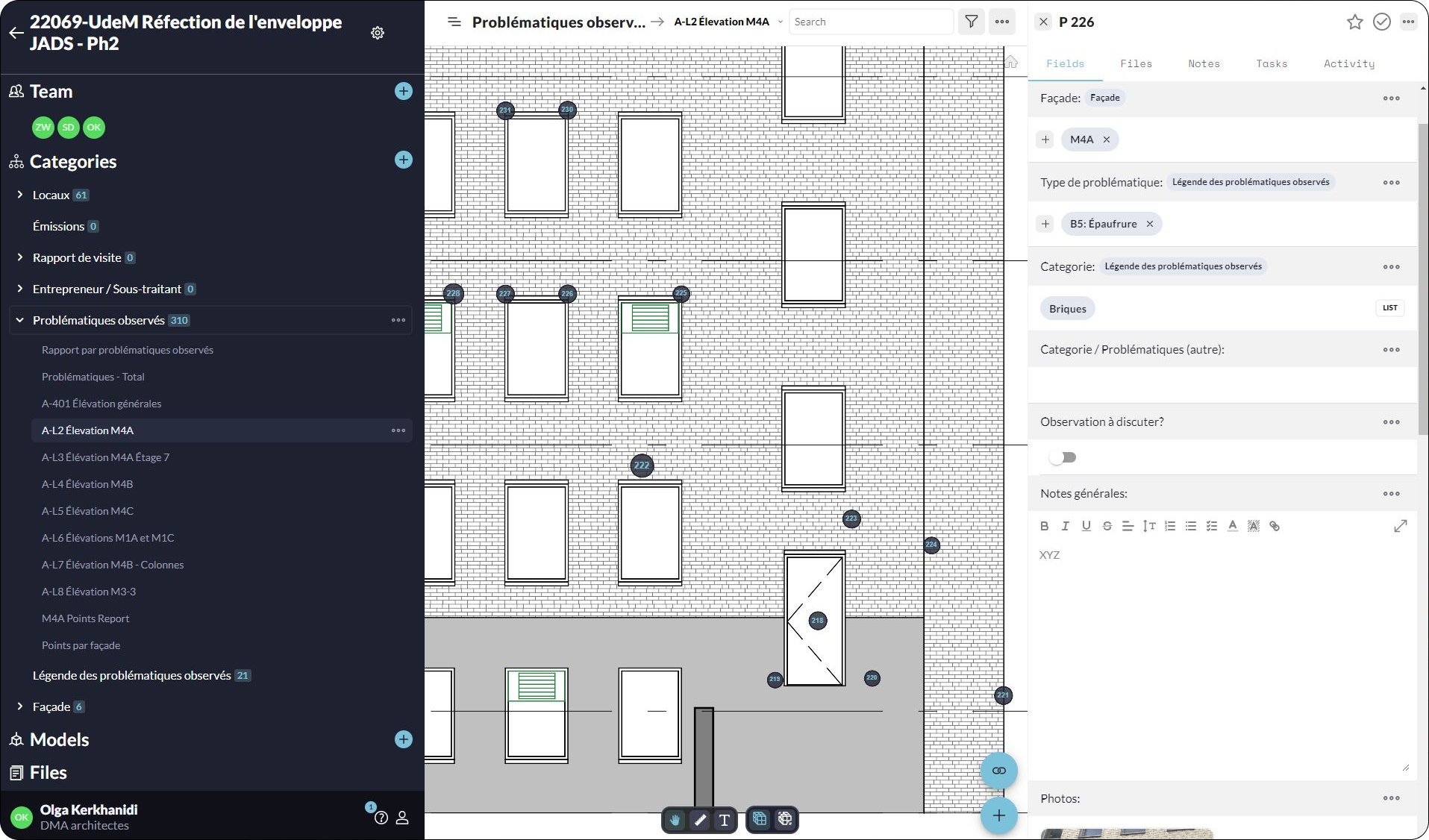
The icing on the cake for DMA: Model Views. They occasionally realized after a site visit, that the model didn’t accurately show part of the building. For instance, the exterior material and window placement were not correct. With Model views, DMA could easily upload a corrected version from Revit, automatically updating the sheets. Then, deficiency markups followed.
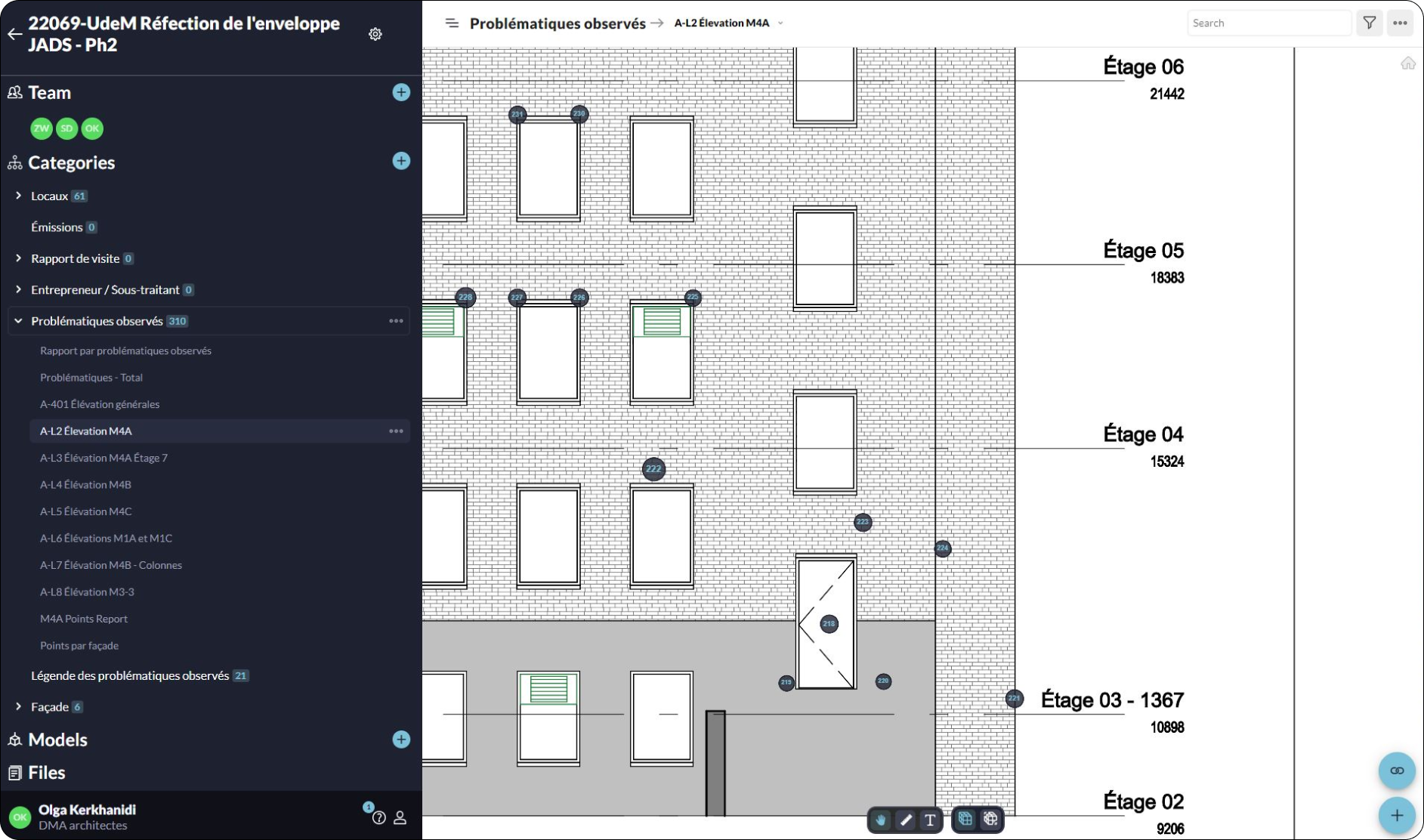
Site tasks differ from demands of the office environment.
Layer’s capability to standardize data across work streams was a significant advantage. This ensured consistency as data was shared between teams. Once the survey was complete, workers in the office could display Model views of observed issues and export data about these problems and their locations. One significant advantage of the tool is the ability to export data regarding these deficiencies along with their coordinates.
The exported deficiency lists in JSON format facilitated seamless integration with the Revit model, making it a hub of information for future projects or mandatory inspections.

Using a Dynamo script, they processed the JSON file, transferring Layer markups into the Revit model at the precise 3D location. This script generated a placeholder, a petite 3D element representing the marker, containing comprehensive deficiency data, keeping all the data in Revit.
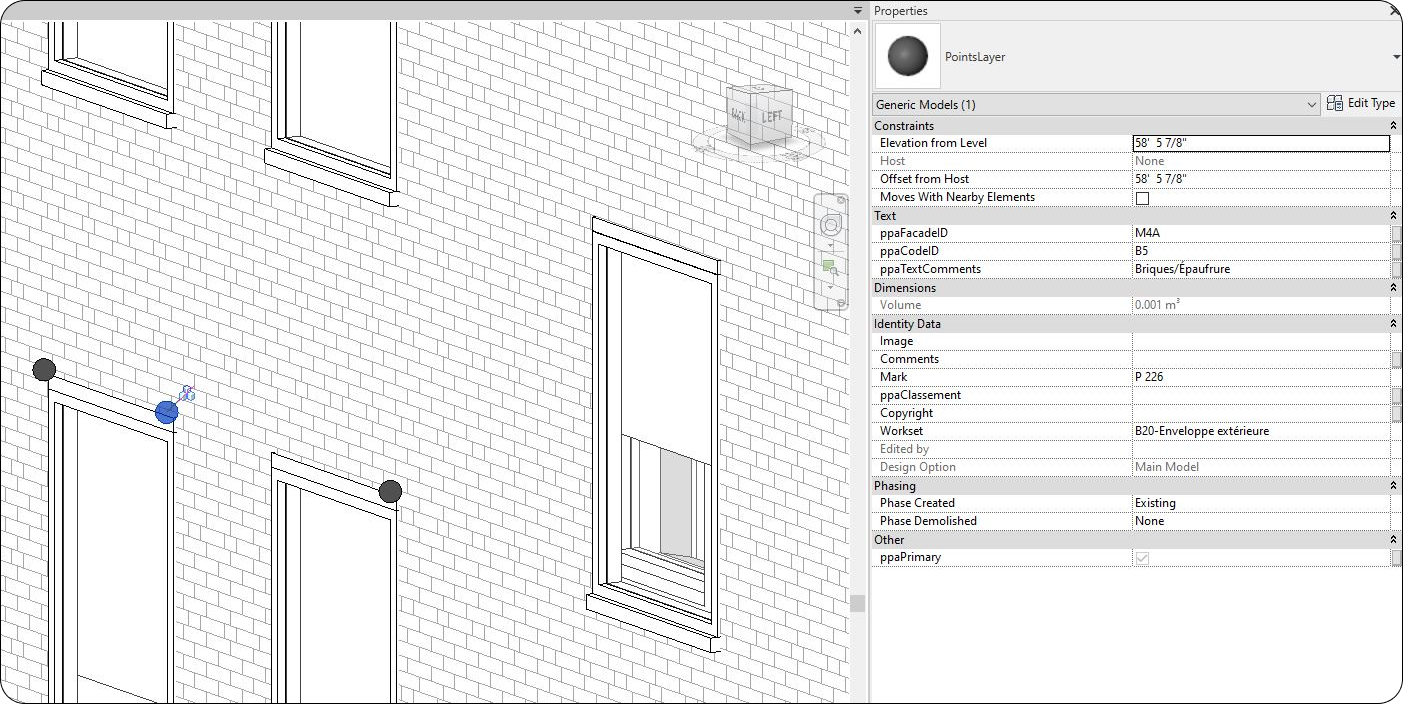
Layer, with its organized data management and ability to integrate with the Revit model, is a significant advancement for DMA Architects. It allows for detailed inspections without the need for intricate modeling. Layer’s consistent organization, intuitive design, and versatile data management made it the perfect tool for collating all project information.
KEY RESULTS
1200
of facade walls surveyed.
(That’s 12,9k sq. ft!)
90%
Reduction in time spent coordinating pins.
1
App to capture, store, and access data in Revit.
About DMA architectes
DMA Architects has been an active architectural and design practice since 1957. Throughout its more than 50 years of existence, the firm has undertaken a variety of architectural projects, predominantly in the institutional and governmental sectors as well as in the commercial, industrial and in urban design.
PROJECT
University of Montreal Pavilions Renovation
LAYER APPS
Flexible Database
Editable Fields / Form
HIGHLIGHTS
-> Flexibility enabled the team to make changes to database properties on the go
-> Mobile integration allowed the team to use their phones on site for data capture
-> Once back in the office, everything is just connected to the model!
KEY RESULTS
→ 90% Reduction in time spent generating pins!